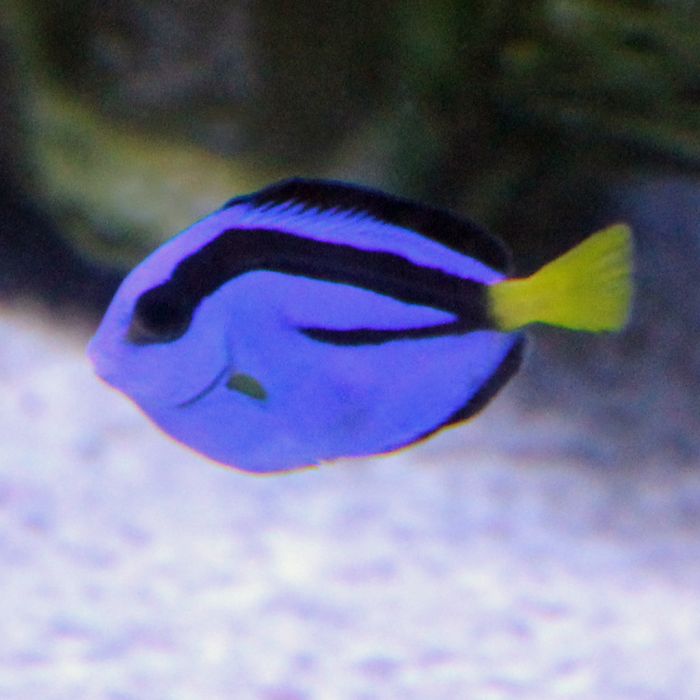Hippo (Blue) Tang (South Pacific)
The Hippo tang is one of the most widely recognized of the tangs, and goes by many names. Its body is primarily bright blue, with a distinctive black pattern extending from the eye towards the tail, which gives it another popular name, the Pallete tang, because this black pattern looks like a painter's pallete. Its bold blue color has also earned it the name Pacific blue tang. This beautiful fish also has a bright yellow tail. The South Pacific variety has extra splashes of color; scarlet red along the dorsal fin and a bright yellow stomach. Males and females are visually identical.
The Hippo tang can grow to be approximately 12 inches long and needs a large aquarium as an adult, we recommend at least 180 gallons or larger. It can be difficult to keep so we recommend it for experienced aquarists only. It is especially prone to parasites such as ICH. It may also easily develop head and lateral line erosion, common causes are insufficient aquarium size, improper diet, and excessive use of activated charcoal.
The hippo tang is the only fish in its genus Paracanthurus, which means as long as an aquarium is large enough it can typically be kept with any other type of tang with no aggressive issues.
Tangs are also called surgeonfish or doctor fish because they have at least one spine just in front of the tail which, when the tail is bent, can be stuck out and used as a threat display or weapon against competitive fish or predators. It is important to be cautious of this spine when handling the fish in a net. They feel most secure when there is plenty of live rock to hide in, as well as open space for swimming. In the wild some tangs live in schools, however in the confines of an aquarium it is usually best to have only one of each genus, or they may be extremely aggressive to each other. They are typically very peaceful with other types of fish.
Care should be taken with tangs to ensure they do not catch external parasites, such as Marine ICH and velvet, to which they are very prone.
Tangs do not eat coral or invertebrates and are considered reef safe. They are primarily herbivorous, and although they love to eat meaty foods, they must be fed plenty of marine algae in order to remain healthy and vigorous. Having a proper diet may also reduce aggressive behaviors; tangs naturally graze on algae throughout the day. Diet should include plenty of marine algae and Spirulina, frozen mysis shrimp, and other high quality items. They typically learn to eat dry foods easily. It is preferable to feed more than once a day, with an algae clip offered approximately every other day.


